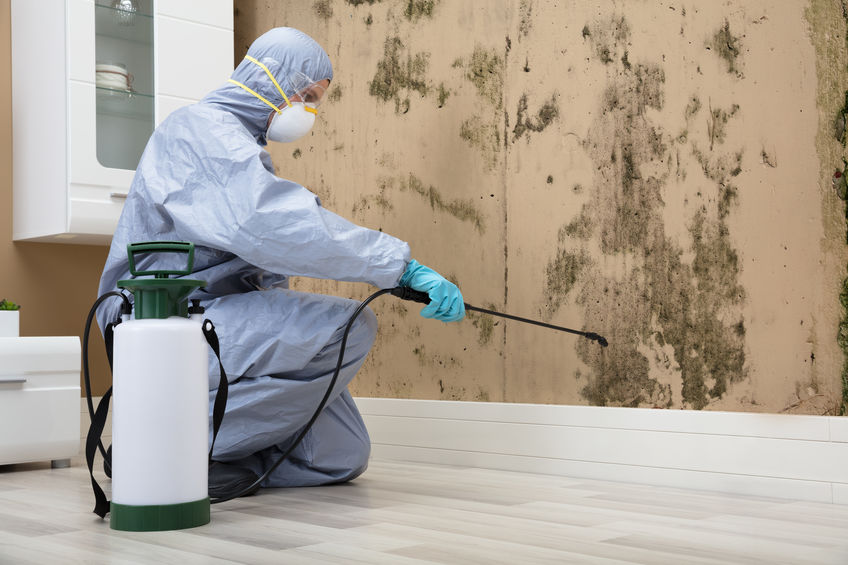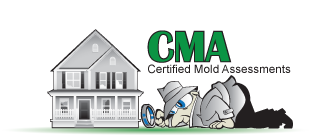 The heavy downpours that occur in the month of June through September create a conducive environment for mold to grow and reproduce. Mold thrives well in a damp environment with constant moisture and high levels of humidity. One of the reasons why people take this issue seriously is because many health risks are associated with mold. Individuals that suffer from frequent allergies, or have compromised immune systems may find it difficult to bear the health effects of mold, which are potentially toxic. The best way to keep your lungs healthy and avoid damage to property is by preventing mold growth. In this article, we will be discussing three ways to prevent mold during the heavy rain months of June through September.
The heavy downpours that occur in the month of June through September create a conducive environment for mold to grow and reproduce. Mold thrives well in a damp environment with constant moisture and high levels of humidity. One of the reasons why people take this issue seriously is because many health risks are associated with mold. Individuals that suffer from frequent allergies, or have compromised immune systems may find it difficult to bear the health effects of mold, which are potentially toxic. The best way to keep your lungs healthy and avoid damage to property is by preventing mold growth. In this article, we will be discussing three ways to prevent mold during the heavy rain months of June through September.
1. Conceal any Leaks before the Rainy Season
There is a good chance that the rain will find its way inside your home the moment it starts to puddle up in your driveway, on the sidewalks or on your roof gutters. Before the start of the rainy season, it is important to locate and seal off any leaks you may encounter in your house. This includes leaks in the roof, walls, plumbing, foundation, basement or blocked gutters. Use caulk to seal leaks found in bathtubs, drains, indoor plumbing fixtures, water pipes and the like.
Weather-stripping may be more appropriate when dealing with larger leaks near doors and windows. It is also a good idea to follow daily practices for keeping your kitchen and bathroom area dry even if you do not encounter a leak. Avoid drying your clothes inside the house and make sure your walls and floors are dry after taking a shower. A regular inspection is essential as it helps you identify and conceal any minor leakages before they take a toll during the heavy rain months.
2. Promote Good Airflow
Excess moisture is more likely to cling to different surfaces in your home including your windows and walls if there is no good airflow. You can get rid of the stale air in your house by moving furniture away from the walls, and opening doors between rooms and windows to let in the fresh air. Use a fan to promote good airflow in large rooms, as it moves cool air quickly through the space. Moving furniture away from the walls provides ventilation to confined spaces. You can also install a dehumidifier or set up a foundation drain to monitor ventilation in your basement.
Other options include setting up a thermal plane, insulating walls and letting the entire room dry. Mold usually thrives well in basements because of poor ventilation. Lack of free flow of air allows mold spores to settle, grow and reproduce in confined areas in the basement. Since it is one of the most neglected rooms in a home, it can cause a disaster once you get into the heavy rain months that are accompanied by high levels of humidity. Install extra vents that are strategically positioned to promote good airflow.
3. Control Moisture Levels
Moisture is one of the major conditions necessary for mold growth. One of the best ways to prevent mold during the heavy rain months is to cut off any sources of moisture present in your home. The kitchen and bathroom are some of the most affected areas in a home because they encounter frequent water spillage and steam from hot showers and baths. Since mold takes a very short time to grow, it is important to dry up wet materials quickly to prevent them from catching mold. Any water leakages in the bathroom, roof, walls, or basement can cause extensive damage to property, as it facilitates the growth of mold, mildew, and fungus.
Poorly insulated ductwork can lead to condensation in the crawl space. Resealing or replacing the ductwork and fixing any water leaks helps minimize the level of humidity in your home. You can use different types of moisture treatment such as sump pumps, dehumidifier, downspouts and extenders, drainage systems and encapsulation.
Prevention is one of the easiest and most affordable ways to deal with mold. Since mold thrives well on the damp environment, you can always get rid of the problem by cutting off any sources of moisture. Allow free flow of air by opening your windows and doors between rooms to prevent poor ventilation. It is also important to prepare for the heavy rain months by concealing any leaks in the roof, walls, plumbing, and foundation. As long as you take care of the conditions that favor mold growth, you will not encounter any signs of mold during the heavy rain months of June through September.
